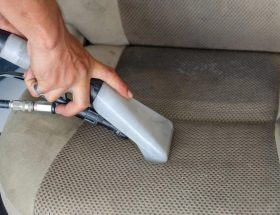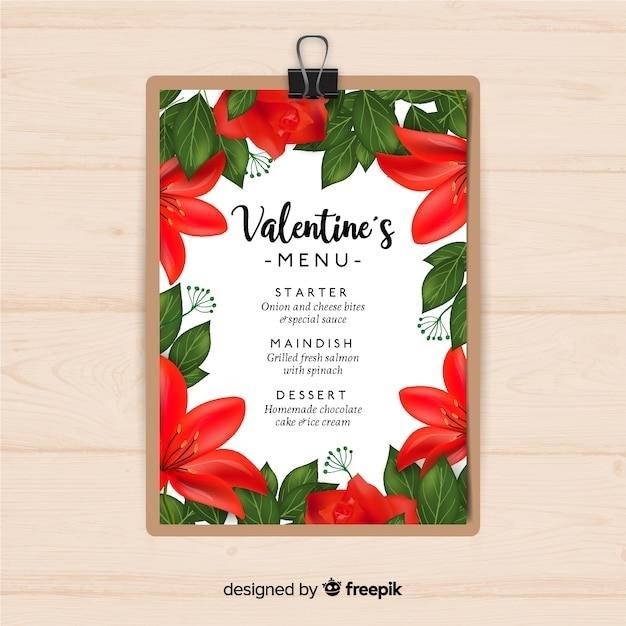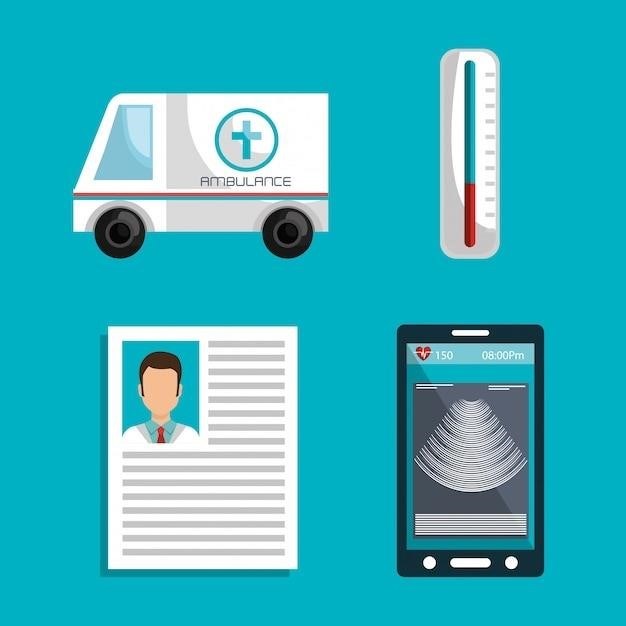crownline boat owners manual
Crownline Boat Owners Manual⁚ A Comprehensive Guide
This guide provides a complete resource for Crownline boat owners, covering operation, maintenance, and warranty information. Access manuals online or through your dealer. Find model-specific details and safety precautions. Enjoy years of boating!
Finding Your Crownline Boat Manual
Locating your Crownline boat’s owner’s manual is crucial for safe and efficient operation. Start by checking the original purchase documentation; it may have been included with the boat’s paperwork. If not there, contact your authorized Crownline dealer. They can provide a copy, often for a small fee. Alternatively, explore online resources. Websites like ManualsLib often host a collection of Crownline manuals. Searching by model number will help narrow your search. Remember to verify the manual’s authenticity to ensure you’re using accurate information for your specific Crownline model.
Available Manuals and Model Specificity
Crownline provides owner’s manuals specific to each boat model. These manuals are not universally interchangeable; a manual for a 200 LS will differ significantly from one for a 275 CCR. Model numbers are crucial for finding the correct documentation. These numbers are usually found on a plate affixed to the boat itself. Online databases may list available manuals; however, always confirm the model number matches your boat before downloading. If you’re having trouble locating your specific manual, contact Crownline directly or an authorized dealer. They can help you find the correct documentation or direct you to reliable online resources for your particular model.
Accessing Online Resources for Manuals
Several online platforms host Crownline boat manuals. Websites like ManualsLib are known repositories for various owner’s manuals, including those for Crownline boats. Searching their database using your boat’s model number is a good starting point. Crownline’s official website may also offer downloadable manuals, though this is not always the case; Remember to verify the model number on your boat’s identification plate to ensure compatibility. Be wary of unofficial sources; only download manuals from reputable websites to avoid potentially inaccurate or harmful information. If online searches prove unsuccessful, contact a Crownline dealer; they may have access to digital copies or can help you obtain a physical manual.
Understanding Your Crownline Boat
Familiarize yourself with your Crownline’s unique features, specifications, and safety mechanisms. Proper identification of your model is crucial for maintenance and repairs.
Boat Model Identification and Specifications
Accurately identifying your Crownline boat model is the first step in understanding its capabilities and limitations. Locate the Hull Identification Number (HIN) typically found on the transom or inside a storage compartment. This unique identifier is crucial for accessing model-specific information, including specifications, diagrams, and parts lists. Your owner’s manual should contain a section detailing how to locate the HIN and interpret its components. Understanding your boat’s specifications such as length, beam, weight, engine type and horsepower, fuel capacity, and seating capacity is crucial for safe and responsible operation. This knowledge will inform your decisions regarding towing, loading, and navigation. Cross-referencing the HIN with Crownline’s online resources or contacting a dealer can also help verify your model and provide access to additional resources. Proper identification ensures you receive the correct maintenance and repair information.
Key Features and Operational Components
Familiarize yourself with your Crownline boat’s key features and operational components. Understanding the functions of the steering wheel, throttle, and shift controls is paramount for safe operation. Learn how to use the bilge pump, navigation lights, and any onboard electronics. Properly identifying and understanding the operation of gauges such as speedometers, fuel gauges, and engine temperature gauges is essential for monitoring the boat’s performance and preventing potential issues. Locate and familiarize yourself with safety equipment such as life jackets, fire extinguishers, and flares. Take note of the location of storage compartments, anchor locker, and other essential areas. The owner’s manual will provide detailed descriptions and diagrams of these components, often with accompanying instructions on their use and maintenance. Understanding these aspects enhances safety and ensures a smooth, enjoyable boating experience.
Safety Features and Precautions
Your Crownline boat incorporates several safety features; understanding their function is crucial. Familiarize yourself with the location and operation of the bilge pump, ensuring it functions correctly to remove water from the boat. Always check the boat’s navigation lights before operating at night or in low-visibility conditions. Ensure all safety equipment, including life jackets, flares, and a fire extinguisher, is readily accessible and in good working order. Review the boat’s capacity limits and avoid overloading. Understand and adhere to all posted warnings and labels concerning the boat’s systems and equipment. Always wear a life jacket, especially in open water or when operating at higher speeds. Before each outing, perform a thorough pre-departure check of the boat and its systems. Regularly inspect safety equipment for any damage or wear and replace as needed. Prioritize safe boating practices to ensure a secure and enjoyable experience on the water.
Operating Your Crownline Boat
This section details pre-operation checks, engine starting, navigation, and maneuvering techniques for safe and efficient operation of your Crownline boat. Mastering these skills ensures a pleasurable boating experience.
Pre-Operation Checks and Procedures
Before starting your Crownline boat, perform essential pre-operation checks. Begin by visually inspecting the hull for any damage or debris. Check fuel levels, ensuring an adequate supply for your planned trip. Verify that all fluid levels (engine oil, transmission fluid, coolant) are within the recommended ranges, consulting your owner’s manual for specifics. Inspect the battery connections for corrosion or looseness, and confirm the battery charge is sufficient. Carefully examine all safety equipment, including life jackets, flares, and fire extinguishers, ensuring they are readily accessible and in good working order. Finally, review the weather forecast before departing, and always inform someone of your boating plans.
Engine Starting and Operation
Starting your Crownline boat’s engine requires a methodical approach. Ensure the gear shift is in neutral and the engine is adequately ventilated. Turn the ignition key to the “on” position, allowing the engine to prime briefly. Then, carefully turn the key to the “start” position; avoid prolonged cranking. Once the engine starts, allow it to run at idle for a few minutes to warm up. Monitor the engine temperature gauge to prevent overheating. When ready to operate, gradually increase the throttle, smoothly transitioning to your desired speed. Always be mindful of other boaters and obstacles. Familiarize yourself with your engine’s controls and operational parameters as detailed in your specific Crownline owner’s manual. Safe and responsible operation is paramount.
Navigation and Maneuvering Techniques
Safe and efficient navigation of your Crownline boat requires understanding fundamental maneuvering techniques. Before setting off, familiarize yourself with your boat’s handling characteristics, particularly at low speeds and in tight spaces. Maintain a safe distance from other vessels, adhering to navigation rules and regulations. When turning, use gentle and controlled movements of the steering wheel or throttle, avoiding sudden adjustments. Be aware of wind and current conditions, which can significantly impact your boat’s direction and speed. Proper use of charts, GPS, and other navigational aids is crucial for safe passage. Always prioritize situational awareness and adapt your maneuvers accordingly. Consult your Crownline manual for specific guidance on navigation systems and recommended practices.
Maintaining Your Crownline Boat
Regular maintenance is crucial for your Crownline’s longevity and performance. Follow the recommended schedule for engine care, hull cleaning, and other essential checks. Consult your owner’s manual for detailed instructions.
Regular Maintenance Schedule
Establishing a consistent maintenance schedule is vital for preserving your Crownline boat’s condition and ensuring optimal performance. Your owner’s manual will provide a detailed schedule tailored to your specific model, outlining recommended frequencies for various tasks. These typically include pre-season checks encompassing engine fluids, battery inspection, and a thorough visual examination of the hull and exterior for any damage or wear. Post-season procedures are equally important, involving winterizing the engine to prevent damage from freezing temperatures and protecting the boat’s exterior from harsh weather conditions. Regular cleaning and waxing will help maintain the boat’s appearance, while periodic checks of critical systems like the fuel and electrical systems help to prevent unexpected issues on the water. Adherence to this schedule will significantly extend your Crownline boat’s lifespan and ensure many years of safe and enjoyable boating experiences.
Engine Maintenance and Troubleshooting
Regular engine maintenance is crucial for the longevity and reliable operation of your Crownline boat. Your owner’s manual details specific maintenance tasks, including oil changes, filter replacements, and spark plug inspections, with recommended intervals. Familiarize yourself with these procedures; improperly performed maintenance can void warranties. Troubleshooting common engine problems is also covered. The manual may include diagnostic charts and flowcharts to help pinpoint issues such as starting problems, overheating, or unusual noises. If you encounter difficulties you cannot resolve, contacting a qualified Crownline dealer or marine mechanic is recommended. Preventative maintenance, such as regular cleaning and lubrication, significantly reduces the chance of major engine problems and ensures your boating season is smooth and enjoyable. Remember safety first; always consult the manual before undertaking any maintenance or repair.
Hull and Exterior Care
Maintaining your Crownline boat’s hull and exterior is essential for preserving its value and appearance. Regular washing with a boat-specific soap and soft brush removes dirt, salt, and grime, preventing damage. Pay close attention to the waterline where marine growth can accumulate. Inspect the hull regularly for scratches, dents, or signs of osmosis. Proper waxing protects the gelcoat from UV damage and enhances shine. For fiberglass repairs, consult a professional. Keep the exterior components, such as the canvas, upholstery, and non-skid surfaces, clean and protected from harsh weather conditions. Regularly check for any damage to these components and address issues promptly to prevent further deterioration. Proper storage, whether in the water or on land, is crucial for minimizing wear and tear. Following these steps will ensure your Crownline boat remains in pristine condition for years to come.
Warranty Information and Dealer Support
This section details your Crownline boat’s warranty, registration procedures, and accessing service and repairs through authorized dealers. Contact information and support resources are also provided.
Warranty Registration and Procedures
To activate your Crownline boat’s warranty, carefully complete and return the registration card included with your purchase. This crucial step ensures timely access to warranty services and repairs should any issues arise. The registration process usually involves providing your boat’s information, such as the hull identification number (HIN), purchase date, and your contact details. Retain a copy of the completed registration for your records. Contact your authorized Crownline dealer or visit the Crownline website for online registration options; instructions may vary depending on your model year and location. Failure to register your warranty may impact your eligibility for coverage.
Accessing Warranty Service and Repairs
Should you require warranty service or repairs for your Crownline boat, promptly contact your authorized Crownline dealer. They are your primary point of contact for addressing warranty claims. Before seeking service, ensure your warranty is registered; unregistered warranties may not be honored. Provide your dealer with your boat’s information, including the HIN and proof of purchase. Describe the issue clearly and provide any relevant documentation, such as photos or videos. The dealer will assess the claim, determine the necessary repairs, and schedule the service appointment. Depending on your warranty terms, parts and labor may be covered, but certain exclusions may apply. Always confirm the coverage details with your dealer before any work is performed.
Contacting Crownline Dealers and Support
For assistance beyond your local dealer, Crownline offers various support channels. Their website may list contact information for corporate offices or dedicated customer service representatives. You can find contact details, including phone numbers, email addresses, and potentially even a live chat feature. Utilizing the website’s resources may provide answers to frequently asked questions or direct you to relevant documents. If you encounter difficulties locating the appropriate contact information, searching online for “Crownline Boats customer support” or a similar query may yield additional results. Remember to keep your boat’s documentation handy, including the HIN and proof of purchase, when contacting Crownline for support.




